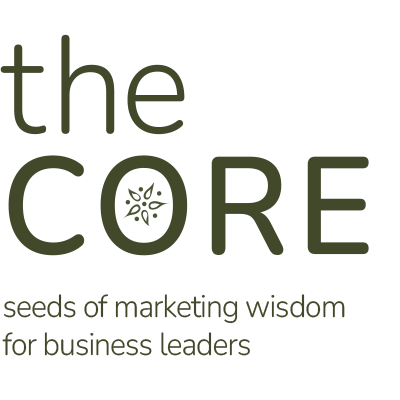Everyone who’s worked in marketing knows what it’s like when things don’t go according to plan. It could come in the form of a last-minute request from a client or realizing you need to rush ship an important resource to an upcoming industry tradeshow. There are days — sometimes seasons — that feel like your marketing job description should include being a part-time firefighter. While you may not be able to completely prevent chaotic moments, having a process-driven approach to putting out fires and staying on track with responsibilities can ensure you (and your marketing team) can keep moving forward with clarity and confidence.
Recognizing there will be chaotic moments and proactively developing a plan to address them is one of the most important lessons we’ve learned over the past decade at Green Apple.
The Most Common Chaos Creators for Marketing Teams
Here are a few of the most common disruptors that marketing teams and agencies must learn how to navigate:
1. Last-Minute Requests
Every company has sudden requests from other departments or higher-ups that require immediate attention. These can obviously disrupt planned marketing activities and require an extra measure of attention and focus. To navigate last-minute requests, it is helpful to have a system in place for prioritizing and tracking them and to be clear with stakeholders about expectations and deadlines.
2. Lack of Clear Objectives or Change in Direction
When marketing teams lack clear goals and objectives, they may struggle to prioritize tasks and may get sidetracked by less important activities. That’s why it’s essential to establish clear marketing goals that align with your overall business objectives. In some cases, new opportunities may arise or your company might change directions on a particular product or go-to-market strategy. In these cases, there may be opportunities to pivot your marketing without abandoning your entire strategy.
3. Technology Issues
Technology difficulties can create an enormous amount of disruption in your day-to-day activities. Technical glitches or failures with marketing tools and platforms can disrupt campaigns and lead to chaos. As a hybrid marketing agency, we’ve had the opportunity to learn how to manage our workload virtually to stay connected and productive. Every person on the team knows what to do if technology issues occur and how to implement a backup plan if communication tools aren’t working.
4. Human Error
Even the best-laid plans can go awry due to human error. It could be anything from a typo in a press release to a missed deadline. That’s why it’s important to have clear processes and procedures in place for catching and correcting errors. It is also important to create a culture of accountability and transparency, where team members feel comfortable admitting their mistakes and learning from them.
Process-Driven Best Practices to Keep Marketing on Track
Here are some helpful best practices that a marketing agency could implement to create a process-oriented approach. Implementing some of these approaches can help keep things running smoothly.
1. Create your marketing plan with involvement from key stakeholders.
Every good marketer starts with strategy. But one of the ways to prevent many of the stressful back-and-forth or navigating changes of direction is to involve key stakeholders to shape your marketing strategy as you build it. This has become an essential part of our approach to building marketing strategies for our clients over the years.
2. Establish clear workflows for status meetings and specific deliverables.
One of the most important factors for a successful business and agency partnership is defining clear and documented workflows for different marketing activities. This includes outlining roles, responsibilities, and timelines for expected deliverables. It’s important to ensure everyone on the team understands and follows these processes.
3. Set realistic deadlines.
Saying “yes” to every request is one of the quickest ways to derail your marketing efforts. As you identify new marketing ideas and make a plan to execute them, you want to ensure that deadlines are reasonable and achievable. Managers should avoid overloading the team with too many tasks within a short time frame.
4. Implement a foolproof quality control system.
An important part of marketing project management is implementing thorough quality control processes to catch and rectify errors before campaigns or projects go live. One of the benefits of working with a marketing agency is that they often have proven quality control measures in place — primarily because of the volume of campaigns we’re running at any given time.
5. Have a backup plan for emergencies.
There will always be situations or scenarios that are completely out of your control. It could be a major PR crisis or a single social media comment that needs to be addressed. Whatever the scenario, it’s crucial to develop clear protocols for handling last-minute crises before they occur. You should also designate a point person who is responsible for evaluating the appropriate action plan and prioritizing the next steps.
6. Use project management tools.
Technology provides a variety of tools that enhance our communication and collaboration. At Green Apple, most of our days are spent collaborating in Google, Basecamp, and Airtable. These tools can help our team track progress, manage deadlines, and communicate with team members.
7. Maintain documentation of your processes.
Well-documented processes can help to prevent errors by ensuring that all of the necessary steps are taken. It also helps when onboarding new team members and provides a reference point for resolving issues. Based on our experience, we’ve learned that it’s essential to document your processes for areas like campaign planning, content creation, social media management, email marketing, campaign evaluation, and website management.
8. Be flexible.
While processes are essential, it’s also important to cultivate flexibility to adapt to changing circumstances or seize unexpected opportunities. Things don’t always go according to plan, so be prepared to make adjustments as needed.
Minimize the Marketing Chaos with Green Apple Strategy
At Green Apple, we’re proud of our track record for helping clients take advantage of new opportunities while minimizing chaos and disruption to their daily operations. We have a deep understanding of the changing marketing landscape and know how to help our clients stay ahead of the curve. We also have a team of experienced and dedicated professionals who are passionate about helping our clients succeed.
If you’re ready to build momentum through an effective marketing approach, you can learn more about our process or schedule a consultation with our team.












